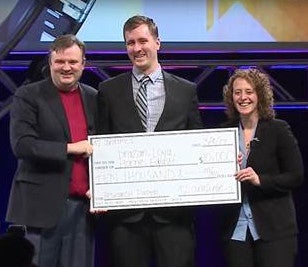Posted March 7, 2017

John Drazan and Amy Loya were on a team that took the first prize in the MIT-Sloan Sports Analytics Research Paper Competition. They wrote a paper on how to use sports analytics to coach youth in order to engage them in the STEM pipeline. The prize was 10,000 dollars and a trip to the NBA summer league to present the work again to the entire NBA. There were over 200 submissions from established sports analytics groups.
They team also included a student from Computer Science (Ben Horne) and a professor from STS (Ron Eglash).
The abstract of the paper is shown below:
Our work explores how sports analytics can be used to broaden the application of math and statistics for youth, by teaching students to gather and analyze data directly linked to their own basketball performance. We believe this approach not only allows players and coaches to use analytics to improve individual performance, but it also provides an authentic, contextualized introduction to science, technology, engineering, and mathematics (STEM) fields. To investigate the potential of sports analytics as a method to increase youth athletes’ understanding of basketball performance and training, we created an open source shooting program that generates personalized heat maps based on user-collected data. We organized a series of free shooting clinics with local middle and high school coaches during which 98 youth participants collected their own shooting data. This was used to generate heat map representations of their own performance. Youth used these heatmaps to visualize their own shooting percentages and scoring efficiency from 14 locations around the court in order to inform their own training and in-game decisions. Program outcomes were evaluated through the use of a pre- and post-tests that assessed the students’ perceptions of their own interest and ability within basketball, analytics, and STEM. Our work showed that the use of analytics within youth programs increased youth confidence in basketball training, and knowledge of applications of STEM and analytics within sports. We believe this approach can be integrated within a professional sports organization’s existing youth programs to promote STEM education as a public good.


